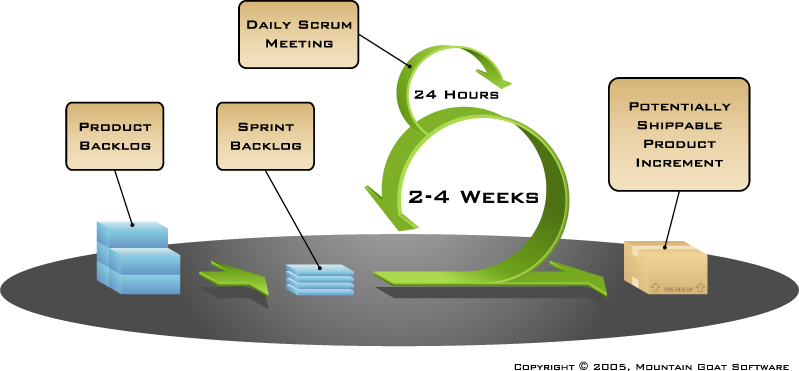This is the last post
before New Year’s Eve: so it is time to “review” the year which is going to
give us the gift of enjoying the last days in its last month. That’s why I
decided to spend few lines about Sprint Review.
2013 has been for this
blog quite an interesting journey of 22 articles: I learned a lot by publishing
them and I hope the 9000 readers (R)Evolutionary Agility had in the last 2
years have learned something as well. I wish you all an exciting and joyful 2014!

Some weeks ago I delivered a 3-days course for Scrum Masters.
I usually visualize the agenda as a backlog of subjects we prioritize together
throughout the training.
“It depends on what you do in your Sprint Demo. Can you tell
me more?”, I answered.
“Well, at the end of the iteration our Program Manager calls
for a Demo meeting. All Scrum Masters are attending and reporting what we
have been doing during the past 3 weeks”.
“So what are you demoing then?, I asked.
“We’re presenting a powerpoint slide set, showing a detailed
report of the different activities during the Sprint, who was doing what and
how much time was spent given the people allocation”.
Again? Yet another manipulated buzzword!?
And yet another empirical evidence of how an organization
can produce so powerful antibodies to resist and protect itself from cultural
change bacteria.
So let’s see if we manage to inject some virus of learning
and growing mindset: these are usually quite effective in spreading willingness
for improvement.
Let’s start from some why: why is a Sprint Review important?
What is the purpose it is meant to serve?
Scrum is grounded in empirical process control theory and therefore uses an iterative and incremental approach to optimize the path towards a certain business goal by means of fast feedback loops.
As any other implementation of empirical process control, it is based on 3 pillars:
- Transparency
All information necessary to
handle the process must be available to those handling the process
- Inspection
The different aspects of the work must be inspected frequently enough so that unacceptable variances can be detected. Of course the skill and diligence of the people inspecting the work resul matter.
- Adaptation
If the inspector determines from
the inspection that one or more aspects of the process and the resulting
product are unacceptable, the inspector must adjust the process or the material
being processed. The adjustment must be made as quickly as possible to minimize
further deviation.
The Sprint Review meetings are
used to inspect progress toward the Release Goal and to make adaptations that
optimize the value of the next Sprint.
 The Sprint Review is then an important learning point and a fundamental
step in the empirical process control applied by Scrum. That’s why calling it just
“demo” is mislabel, since this word does not capture the real intent of this ceremony.
Let’s analyze what might be the learning points for the main actors:
The Sprint Review is then an important learning point and a fundamental
step in the empirical process control applied by Scrum. That’s why calling it just
“demo” is mislabel, since this word does not capture the real intent of this ceremony.
Let’s analyze what might be the learning points for the main actors:- The Product Owner and key stake-holders learn what is going on with the product, what are the results of the Sprint and check whether those results are able to bring the whole Scrum Team closer to the Product Vision. The Sprint result will have anyway impact on the Product Backlog for the next Sprint Planning: new stories might be added, changed or removed and prioritization might change.
- The Development Team learns what is going on with the Product Owner and the market. They also learn whether the Sprint Result validated the assumptions they made during the Sprint Planning. For that reason it might be useful to review the estimates, to check whether they got confirmed after the story was actually built: in this way the team know how to estimate better and build a better baseline to relate further estimations. They’d better review also the different team metrics and the Sprint Burndown Chart to gather interesting data for the coming Sprint Retrospective. Review of Team Working Agreements and Definition of Done will indicate the team whether what they learned during the Sprint can affect the team’s rules or their quality criteria.
For these reasons, the most important element of the Review is
the conversation and collaboration between the Team and Product Owner
to learn the situation, to get advice, and so forth.
It is a public ceremony: the Product Owner, Team members,
the ScrumMaster, plus customers, stakeholders, experts, managers and anyone
else interested is allowed to attend and anyone present is free to ask
questions and give input. The Scrum Master will work to maximize the learning
of all participants.
Even though calling the Review just “demo” doesn’t really
make the point, the demo is anyway an important part of it. But what does it
make sense to demo?
Let’s have a look at some of the Principles in the Agile
Manifesto:
1) Our highest
priority is to satisfy the customer through early and continuous delivery of
valuable software
3) Deliver
working software frequently, from a couple of weeks to a couple of months, with
a preference to the shorter timescale.
7) Working
software is the primary measure of progress.
It doesn’t mention powerpoint slides, right? J
So the only demo which makes sense is showing an
installation of an integrated potentially shippable product increment. BTW, the
Product is the only language which everybody, from business to developers will
understand the same way.
Remind: spend as little time as possible on preparing for
the demo. If you need to spend a lot of time there must be something wrong
somewhere.
How will you change your next Sprint Review?





